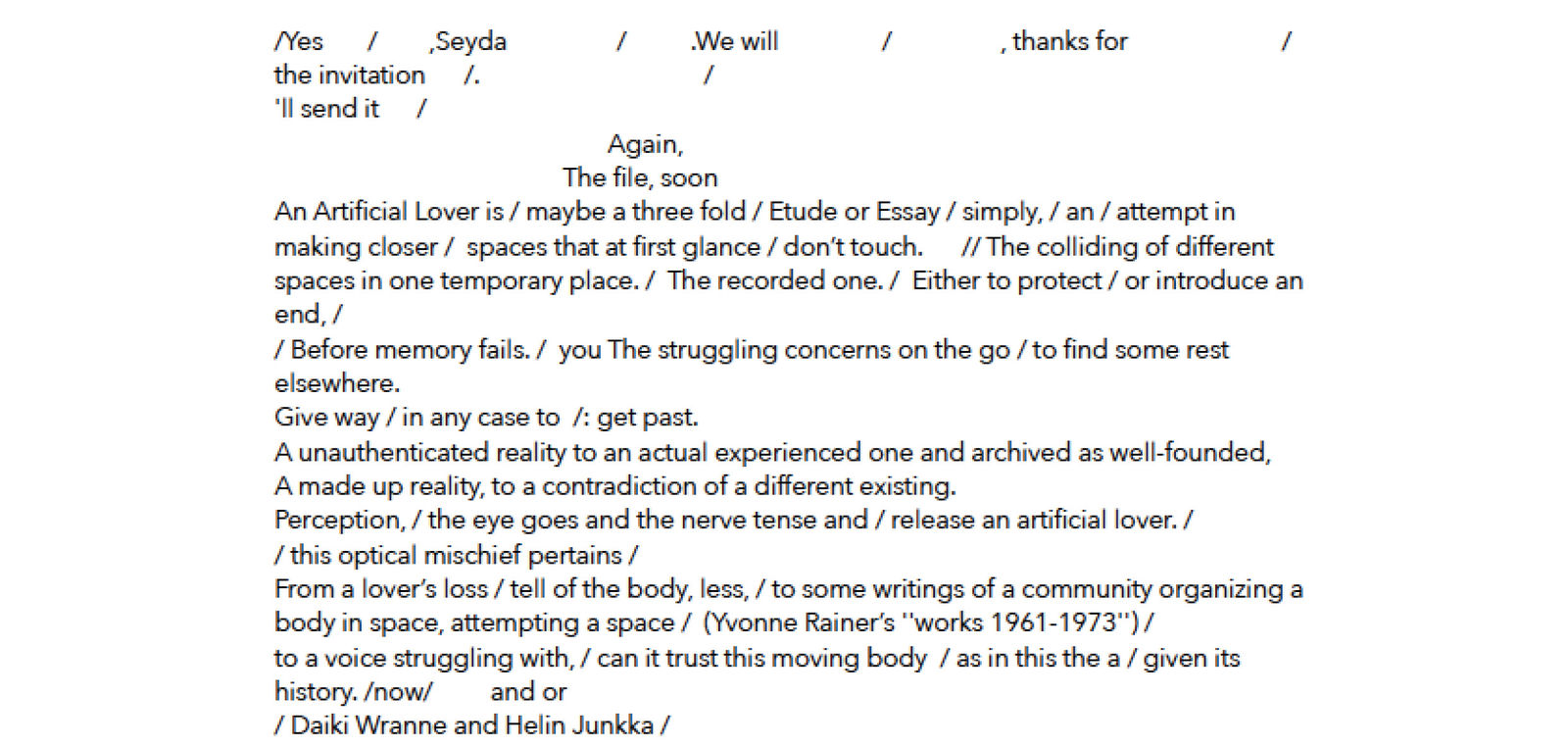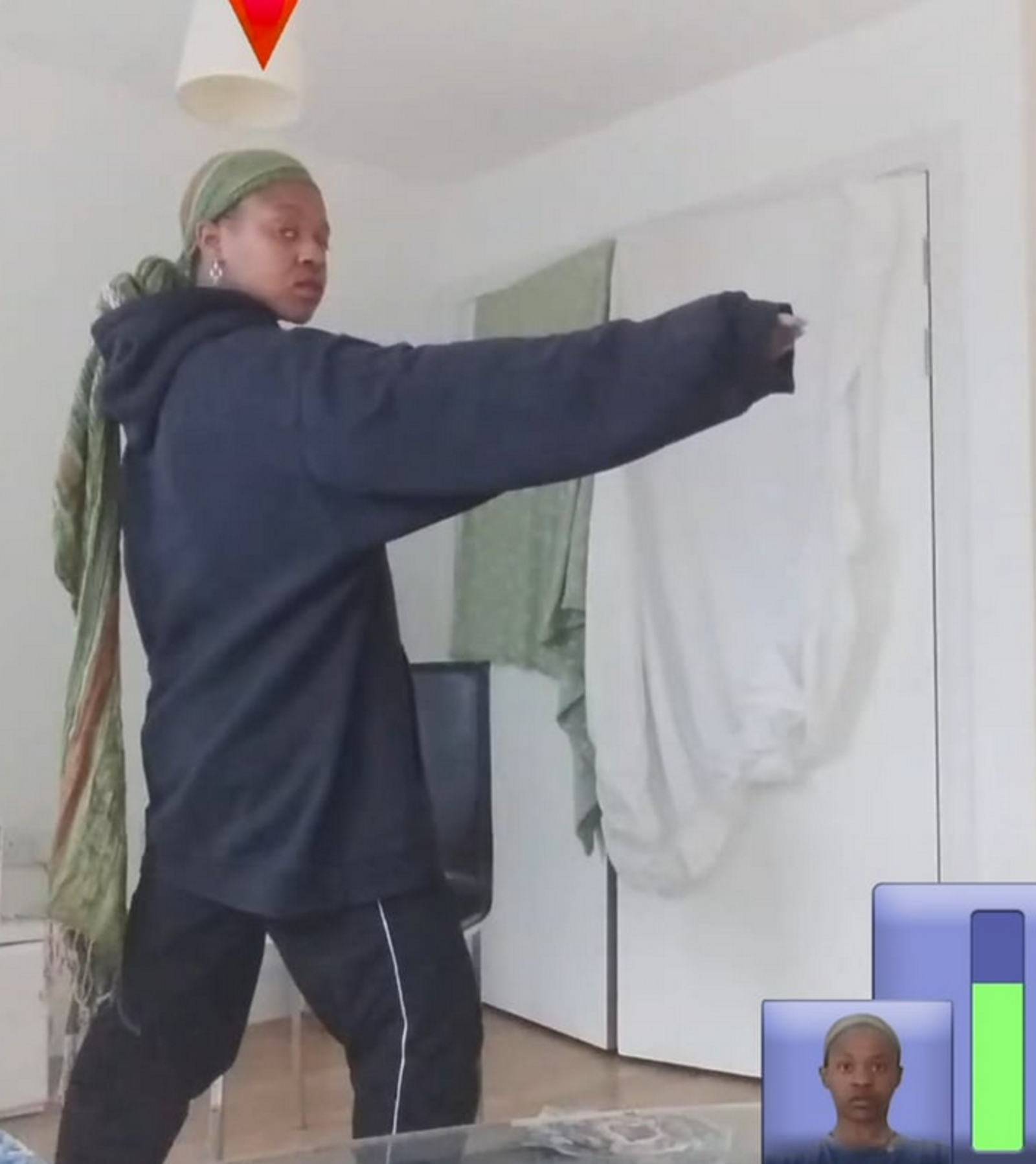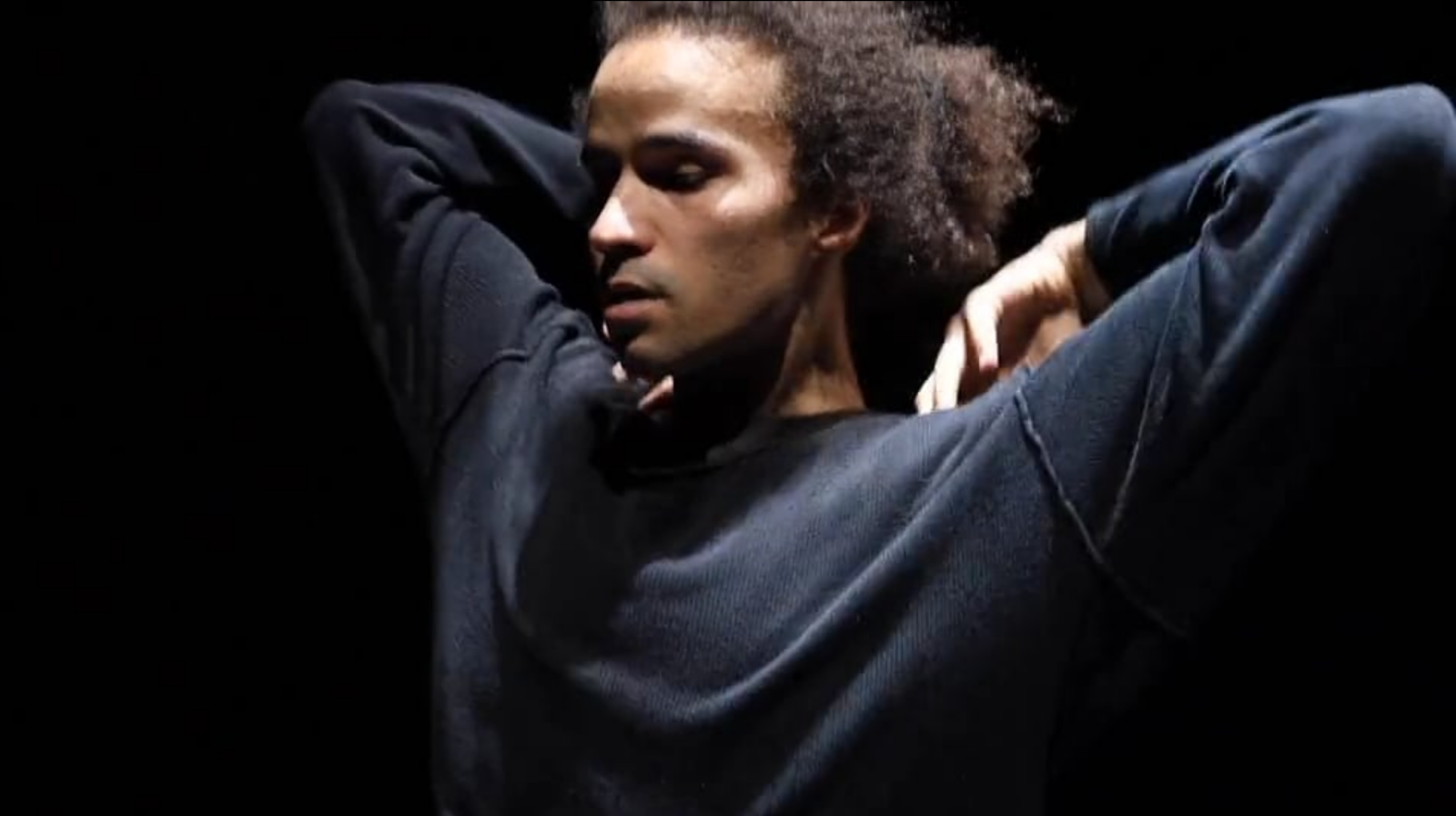Dance Tryptich (3/3): Seyda Harjo Grahn
published on 23. June 2020

If you had to give a brief introduction to your solo – what would you say?
I invited two friends, Daiki Wranne and Helin Junkka, to present their work. One could call it a duet, I guess. I only appear for just a brief moment as a guest. They’re mostly working with films, and I think this one could be read as some sort of poetic study of image making and formation. In many ways, I think they are trying to bringing the ambivalence of the image and the eye closer together till perhaps the point of rupture. Making that space thinner, making the space thinner, to find an impossible relation between the two, a permeability inviting the eye further and past (beyond) the factual, the representational and the illusion, past (beyond) the ambivalent production and projection in an attempt to rethink habituated forms of perception. This is what I’d say from working and talking with them during the process. But I must admit, I haven’t seen the film yet.
I know they wanted to show something else originally but they couldn’t finish the editing on time. The two films won’t form a sequel or a diptych but will probably be connected by Daiki and Helin’s ongoing interests and questions.
I should maybe say here, that, because these questions were mostly addressed to me (a dancer) and because the two of them aren’t (dancers) and that on top of that, they are still working on the film, we thought it’d make sense if I tried to answer them. So here, I do.
Is your solo conceptually connected to the period of lockdown we are living in?
I might be wrong, but knowing them a little, I would be surprised if that was the case.
There seems to be something too essential for them when thinking and making in general, which is, they always try as much as possible to avoid holding a reactionary position. Instead they usually prefer to give time to things. I think that this could also be applied to this moment as well.
How did you as a dancer whose profession is movement experience the last months of immobility and standstill?
A delight for a dancer dreaming about immobility. I still want to cast my hands flat but haven’t found the time yet. The idea would be to have them to rest for a while and learn to do without them, to unlearn, to forget about ones own body parts and to rediscovering them, a luxury, I concede.
A nightmare for a hyperactive dancer with attention deficit hyperactivity disorder.
How did your body react on the halt?
I saw the flesh retract, the muscles melting, the joints being cut short by gravity, but also everything around the bones starting to take some more space, pushing the flesh to the point of stretching it to its full capacity (it will adapt over time) outward.
An inward and outward back and forth movement challenging the overall structure in question.
If you had to decide: is dance more a practice for mavericks or for social animals?
Forever both. And thank goddess I don’t have to choose.
There’s nothing better than descending or upping in one’s own dancing body - full scale.
There’s nothing worse than dancing alone if one feels something’s missing.
There’s nothing better than bodies colliding and declaring a parenthesis, when verbal language has to adapt and make space for something to be determined alongside it.
It thinks bodily, it thinks through words, together, in tension, looking for translation.
There’s nothing worse than bodies colliding, finding close proximity for the void can’t fill their horror.
The point of contact sometimes fails, fails the body, fails you, you are the body.
Human dance after all. Surfacing.
Better, worse, away, together,
void,
As a dancer: have you learned something from being in quarantine?
Making choreographies and dancing in one’s head for an invisible audience, door closed, window shut, is a newly acquired skill...and I was thinking of staging this eventually. Making public that whole process of thinking, presently trapped in projection. Someone is sitting on a chair.
In one’s own head.
Remaining intact.
I guess, here, I’m wondering if eternity could come from there, in a state of... projection. Reaching pure projection. Or this could incite violence, more violence. That’d be interesting to see.
And if violence would occur in the room, say from the audience’s side, what would they want to do with it? Could it be maintained and pushed further, or would it be, should it be, dropped like when stepping down the stairs, leaving the building with one’s own back. Letting it becoming smaller and smaller, together with that violence.
Theater without Theater.

